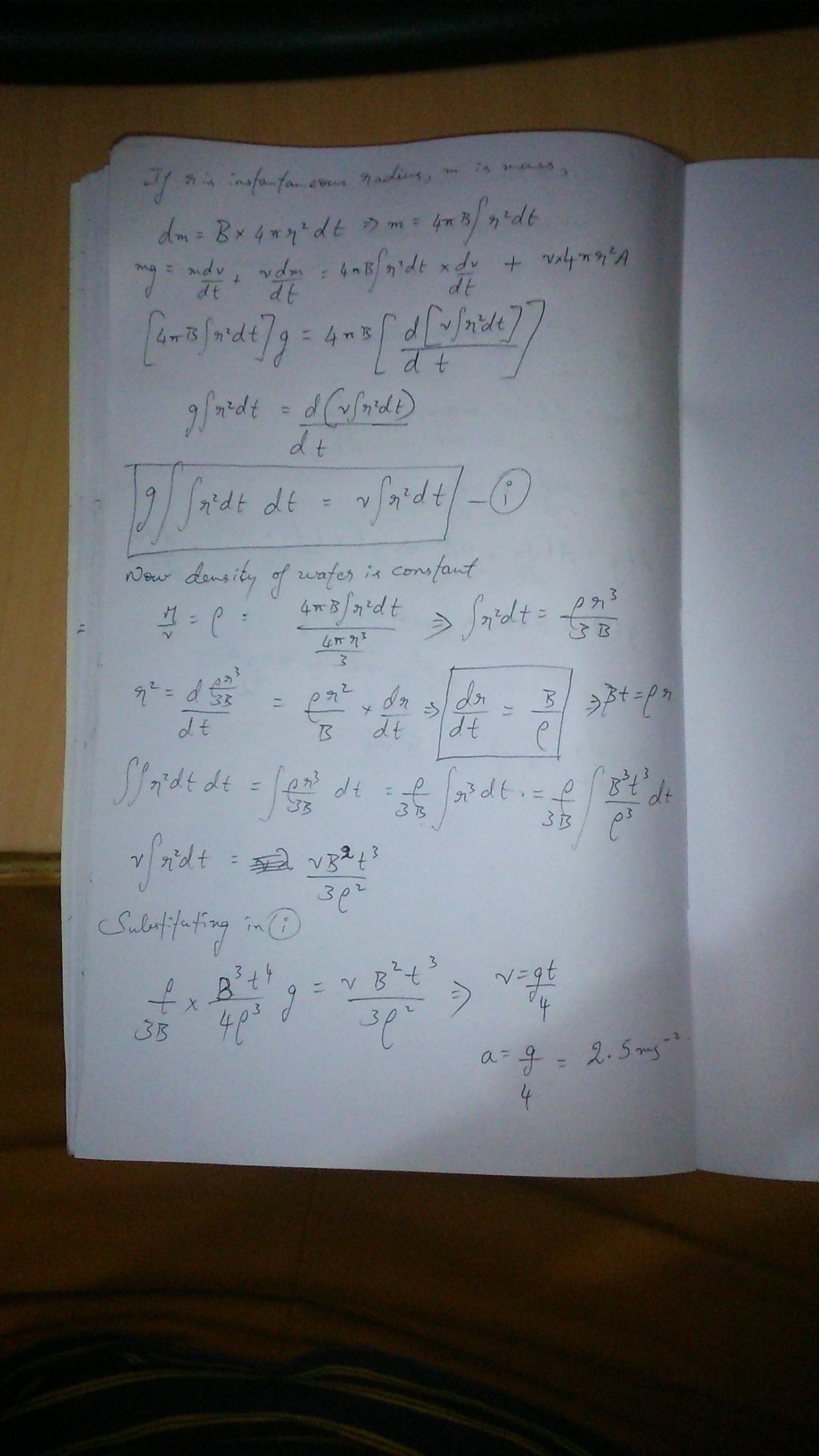The Speck Of Dust Returns
A speck of dust of negligible mass begins to fall under gravity through a region of space with saturated water vapor. If the mass accumulation is B times the instantaneous surface area of the drop, calculate the acceleration of the drop in .
Details and Assumptions
- The drop falls through uniform gravitational field where .
-
Assume the drop to be spherical.
-
B is a constant
Hint : If is the radius of the drop, show that is proportional to .
this problem is part of the set "innovative problems in mechanics"
The answer is 2.5.
This section requires Javascript.
You are seeing this because something didn't load right. We suggest you, (a) try
refreshing the page, (b) enabling javascript if it is disabled on your browser and,
finally, (c)
loading the
non-javascript version of this page
. We're sorry about the hassle.

From the equation of motion (Newton's second law) we have: m g = d t d ( m v ) , with a time-dependent mass. We can recast the above equation as d t d v + m 1 d t d m v = g . Now we focus on the relative mass variation. According to the problem, we have: d t d m = B A , where A is the drop surface. Being the latter spherical, A = 4 π r 2 , with r the radius of the drop. The mass of the drop can be written as m = 3 4 π ρ r 3 , where ρ is the water density. Assuming the latter constant, we obtain d t d r = ρ B . Assuming B constant (it should be stated in the problem), we find the time evolution of the radius: r = ρ B t . We can put to zero the integration constant because the problem says that at the beginning the speck of dust has negligible mass. The latter is written then m = 3 ρ 2 4 π B 3 t 3 , so that m 1 d t d m = t 3 . The equation of motion becomes d t d v + t 3 v = g , whose solution is v = 4 g t , where I used the initial condition v ( 0 ) = 0 . Deriving the velocity with respect to time we obtain the acceleration: a = 4 g